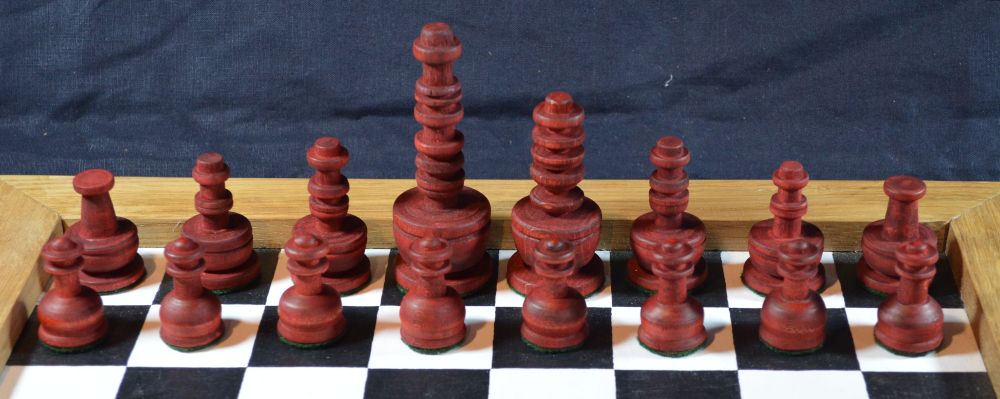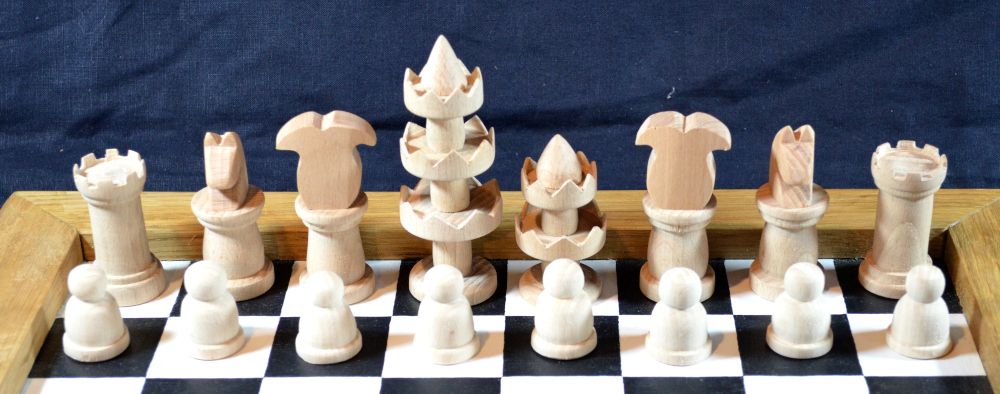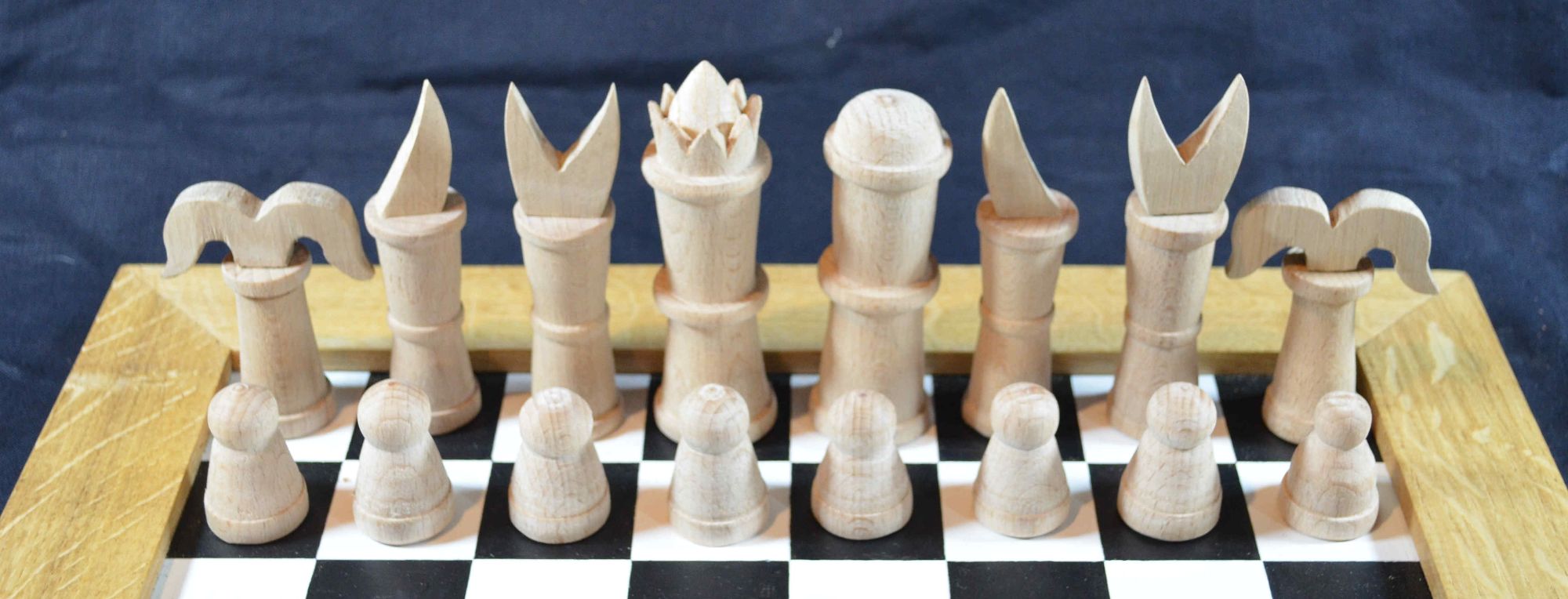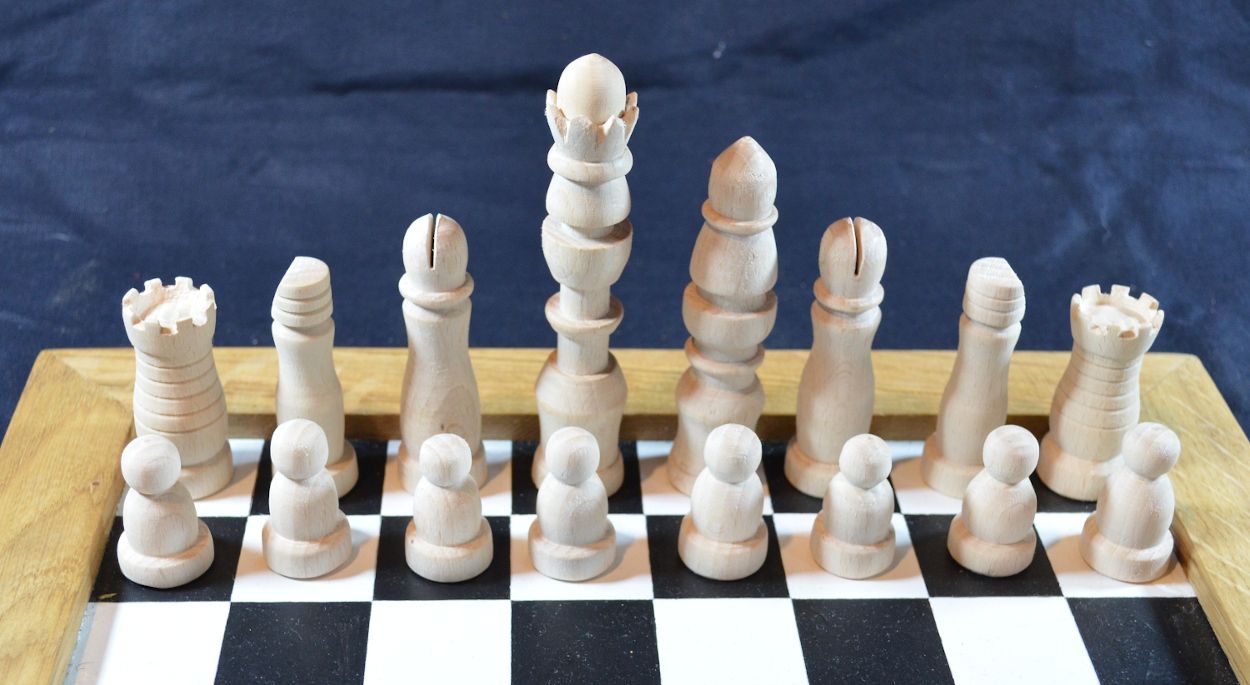Early Historic Chess Sets
Chess has its origins in sixth century India, where, known as Chaturanga, it took the form of a battle between two Indian armies made up of elephants, horses, chariots and infantry, led by a king and his vizier or advisor. Chess grew in popularity in the Islamic world and became known as Chatrang in Persia and Shatranj in Arabia. It reached Europe, probably through Spain, in the ninth or tenth century with the same rules and pieces. The game spread quickly throughout Europe, and over the following six to seven hundred years the rules were modified, the names of the pieces changed, and the shape of the pieces themselves evolved. By the seventh century the elephants, horses, chariots, infantry, kings and viziers of Chaturanga became recognisable as the bishop, knight, rook, pawns, king and queen of the modern game.
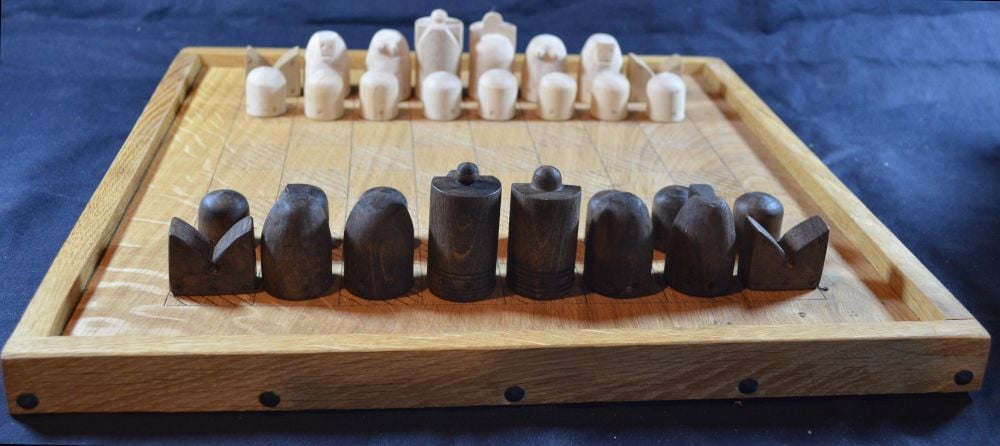
The Historic Games Shop has been making chess boards and reproductions of historic chess sets for many years (originally under the Gothic Green Oak banner), mainly as commissions for display in museums or historic properties (e.g., Dover Castle), or for reenactment groups or chess enthusiasts. The following pages describe some of the most important milestones in the evolution of chess pieces through the early to later medieval period and into the sixteenth and seventeeenth centuries. The examples are drawn from archaeological finds, paintings in hand-written manuscripts and wood-cuts in early printed books. You can click on the "Begin" button at the bottom of the page, or on the individual links below to read about different regions or periods and their chess sets. You might also like to watch our YouTube video on chess sets of the tenth to seventeenth centuries. Or, you might like to vist our shop to see the chess sets we have currently available.
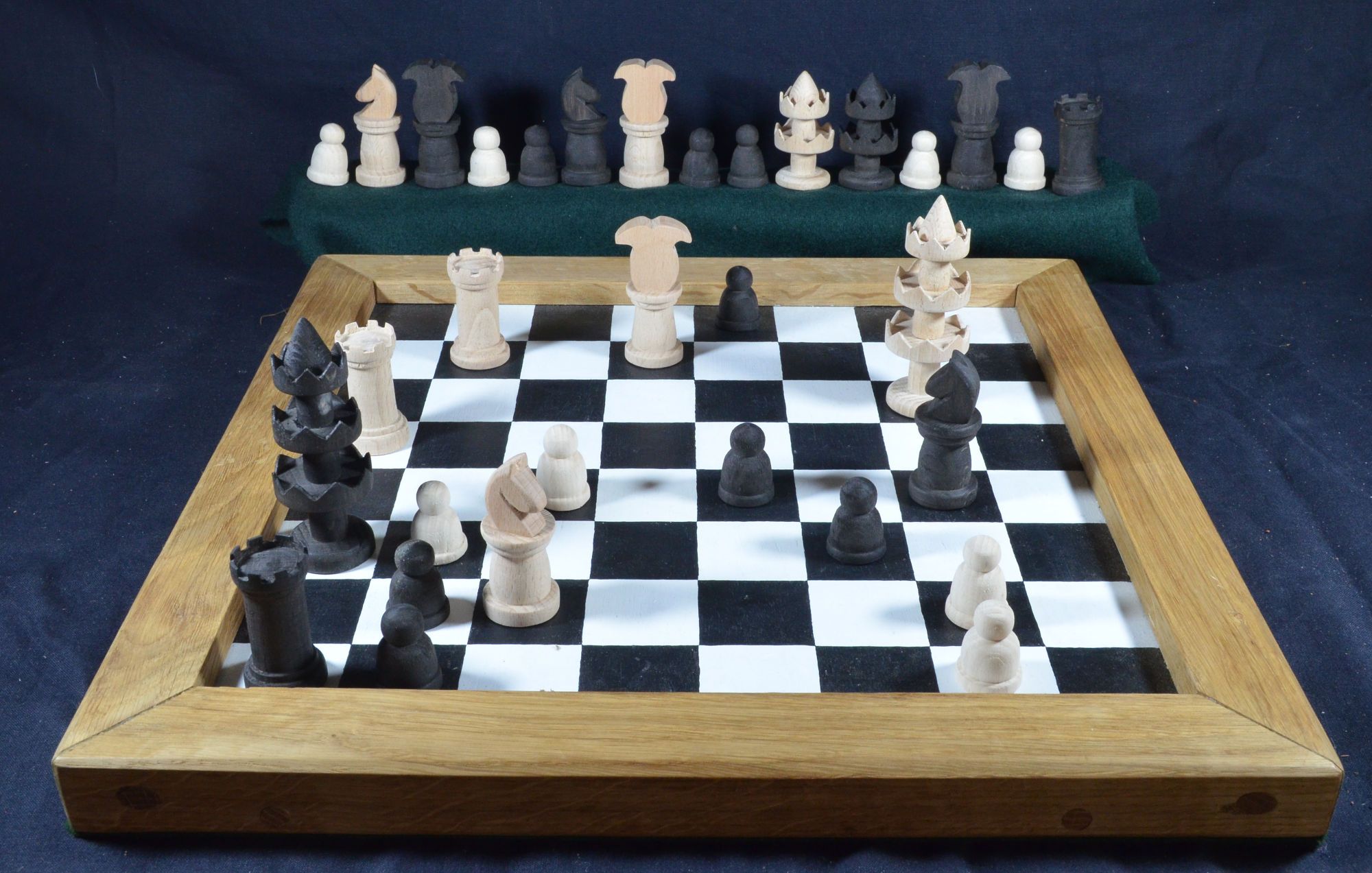
- A brief note on interpreting manuscript illustrations of chess sets
- The design and manufacture of chess sets
The Chess Sets
- Early medieval chess pieces
- Chess sets of the late thirteenth century
- Chess sets of the fourteenth century
- The chess set from the Regnault de Montauban manuscript, c. 1470
- Fifteenth century Cessolis and Caxton chess sets
- The Publicius and Lucena chess sets of the late fifteenth century
- The chess set of Fra Luca Bartolomeo de Pacioli, c. 1500
- The chess set of Pedro Damiano, c. 1512
- Albrecht and Anna, and German sets of the 16th century
- The seventeenth century Selenus chess set

